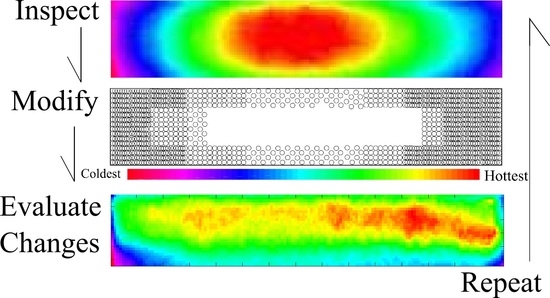Automated Laser Ablation of Inhomogeneous Metal Oxide Films to Manufacture Uniform Surface Temperature Profile Electrical Heating Elements
Abstract
Share and Cite
Ingham, J.; Lewis, J.; Cheneler, D. Automated Laser Ablation of Inhomogeneous Metal Oxide Films to Manufacture Uniform Surface Temperature Profile Electrical Heating Elements. J. Manuf. Mater. Process. 2019, 3, 65. https://doi.org/10.3390/jmmp3030065
Ingham J, Lewis J, Cheneler D. Automated Laser Ablation of Inhomogeneous Metal Oxide Films to Manufacture Uniform Surface Temperature Profile Electrical Heating Elements. Journal of Manufacturing and Materials Processing. 2019; 3(3):65. https://doi.org/10.3390/jmmp3030065
Chicago/Turabian StyleIngham, Joshua, John Lewis, and David Cheneler. 2019. "Automated Laser Ablation of Inhomogeneous Metal Oxide Films to Manufacture Uniform Surface Temperature Profile Electrical Heating Elements" Journal of Manufacturing and Materials Processing 3, no. 3: 65. https://doi.org/10.3390/jmmp3030065
APA StyleIngham, J., Lewis, J., & Cheneler, D. (2019). Automated Laser Ablation of Inhomogeneous Metal Oxide Films to Manufacture Uniform Surface Temperature Profile Electrical Heating Elements. Journal of Manufacturing and Materials Processing, 3(3), 65. https://doi.org/10.3390/jmmp3030065






